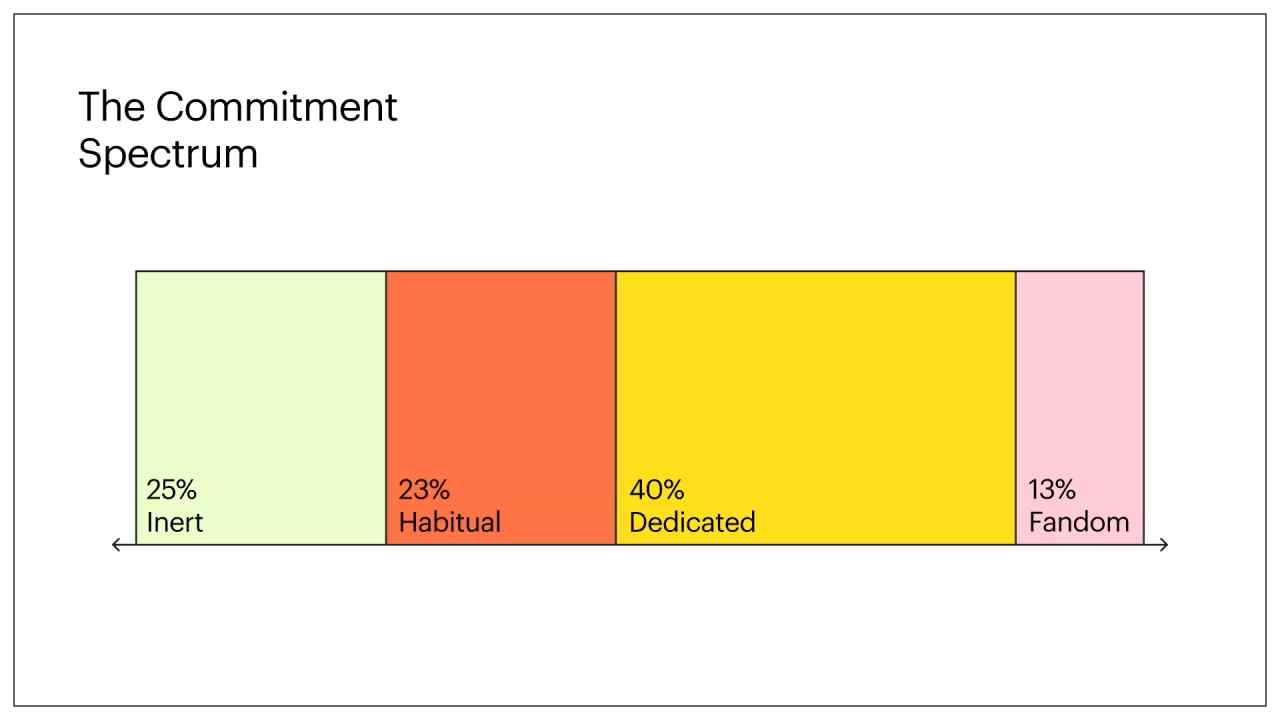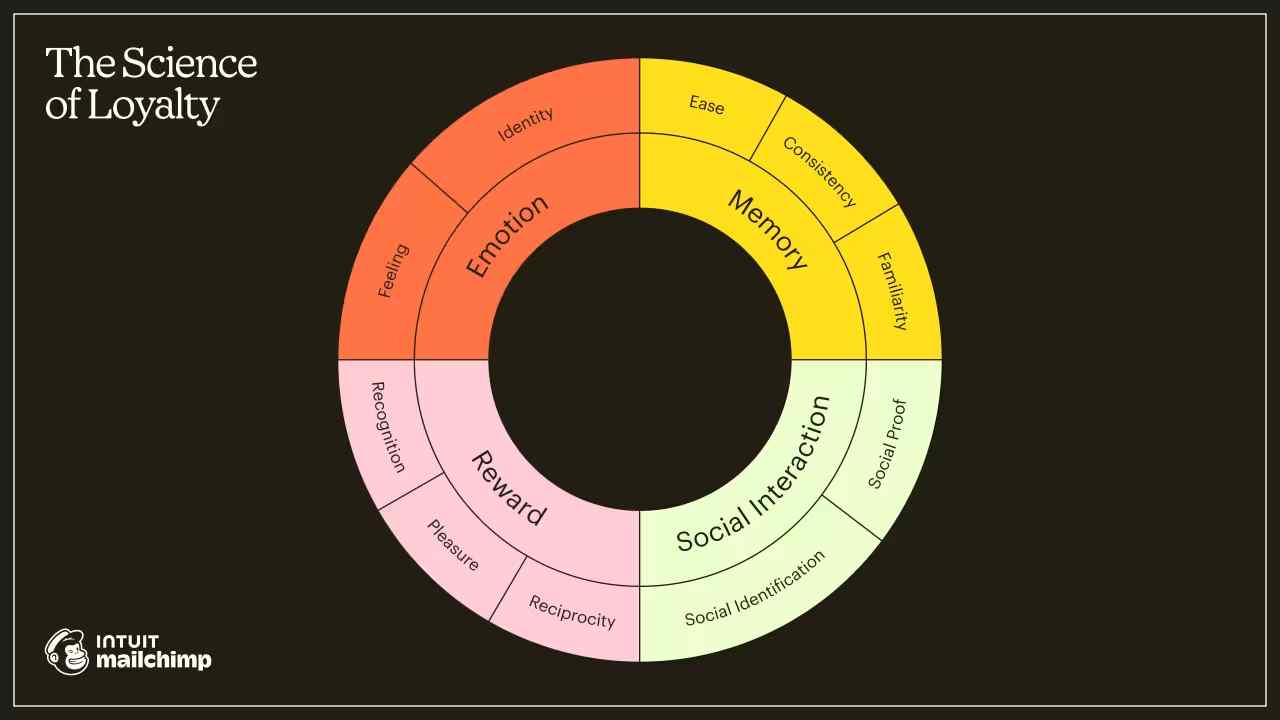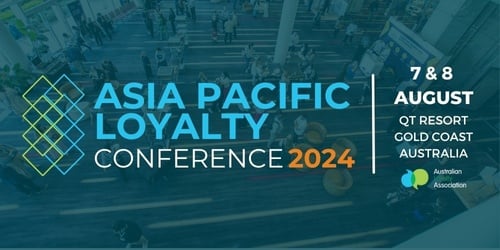Share

 Intuit Mailchimp vice president of brand experience Mark DiCristina decodes the science of loyalty to build stronger customer connections, more sustainable growth and increased brand resilience.
Intuit Mailchimp vice president of brand experience Mark DiCristina decodes the science of loyalty to build stronger customer connections, more sustainable growth and increased brand resilience.
Brands often celebrate repeat purchases as a sign their marketing strategies are effectively building consumer loyalty. However, this may overlook a crucial reality: loyalty isn’t a one-size-fits-all concept. It’s a spectrum, encompassing diverse levels of commitment. Sometimes what looks like loyalty might simply be habitual behaviour.
Intuit Mailchimp’s recent ‘The Science of Loyalty’ report shows 26 percent of repeat brand purchases are attributed to routine – highlighting the influence of habit. The Commitment Spectrum’, a concept disclosed by the report, underscores the different levels of customer loyalty. Let’s dive more into these levels and how marketers can engage each in a meaningful way.
Routines as powerful drivers of loyalty
Inert and habitual customers lie in the first part of the Commitment Spectrum. Both rely solely on habit, routine and convenience for their purchases and possess limited to no brand awareness.
Inert customers and prospective customers tend to opt for a brand due to its accessibility, discounts or popularity, rather than genuine preference. Their loyalty stems more from convenience than affection with 82 percent of consumers surveyed indicating they choose a product for its availability.
Grocery shopping is a great example. Often, consumers opt for products that come with discounts or promotions, even if that means selecting a brand they might not prefer over a slightly pricier alternative in the same category.
Habitual customers tend to choose out of habit rather than any strong emotional connection, focusing more on the type of product they’re buying rather than a specific brand. In this category, 49 percent of them say they would buy from another brand if their preferred one wasn’t available.
Imagine you stop by the same coffee shop every morning on your way to work. It may not necessarily be that they serve the best coffee, but your brain has formed a routine that makes it your default choice. Habitual customers operate similarly; they stick to their routine choice, driven by a neurological desire for simple decision-making.
However, as unreliable as they may seem, these audiences should not be overlooked by marketers. They still hold great opportunities for first-time purchases that can at some point, be nurtured into the next loyalty step.
Emotional connections create strong bonds
Moving up on the spectrum, we find dedicated customers. These are individuals who have developed emotional connections with a brand’s vision and purpose that go beyond mere transactions. They actively support their preferred brands, prioritising them over competitors even if others are more convenient.
Some apparel brands excel at securing dedicated customers by embracing an inclusive vision that resonates with them. It can be by celebrating individuality, promoting sustainability or donating profits to charitable causes. Even if their products are pricier than others, customers prioritise supporting the brand’s vision over convenience.
Notably, 59 percent of dedicated customers reported purchasing from brands that offer perks and make them feel valued, indicating they are motivated by drivers like recognition and belonging. This group values trustworthiness, quality and purpose, so marketers should apply strategies that cultivate these purchase drivers.
The peak of loyalty is not for everyone
We finally reach the pinnacle: the fandom. Here, customer connections run deep with shared values, interests and a profound sense of belonging. A striking 74 percent of customers in this stage affirmed their preferred brand mirrors their personal values – surpassing the 68 percent of the inert group and the 60 percent of dedicated customers.
Yet, achieving this level of loyalty – aimed by many brands – isn’t easy. Only 13 percent of global respondents to Mailchimp’s study fell into the fandom category, highlighting the challenge it poses.

While reaching this audience may be perceived as the desired outcome, not all brands need to achieve this loyalty stage. Different businesses may have varying priorities and for some, fostering this intense loyalty might not be aligned with their objectives or business model.
Utility businesses, like water or electricity providers, prioritise reliability and efficiency in delivering essential services rather than cultivating fandom loyalty. On the other hand, industries like gaming actively engage with their communities through events and social media to foster a sense of belonging and passionate loyalty among players.
Addressing each customer experience
An effective strategy encompasses tailored tactics that cater to these varying degrees of customer loyalty.
Inert and habitual customers prioritise convenience. To capture this audience, brands should enhance their accessibility. This involves focusing on three key elements: ease, consistency and familiarity. Strategies might include:
- Removing shopping obstacles for an easier purchase journey
- Providing curated content to combat choice fatigue
- Appearing in trusted environments
Dedicated and fandom customers are motivated by purpose and belonging. To foster these connections, brands should prioritise enhancing motivation. Three key areas to improve it are social interaction, reward, and emotion. Strategies may involve:
- Promoting organic peer-to-peer marketing through gift-giving
- Actively asking for customer feedback to make them feel valued
- Tailoring reward programs to suit customer lifestyles
- Gamifying elements to create a sense of fun
- Report on the impact of the brand’s social and environmental initiatives
A roadmap to business resilience
Brands and marketers have long recognised the significance of loyalty. This understanding is supported by findings from ‘The Science of Loyalty’ report, which reveals 70 percent of consumers prioritise purchasing from the right brand.
However, as we’ve just seen it’s crucial to recognise the diverse forms of loyalty and address each accordingly to strengthen customer relationships. Loyalty goes beyond mere brand recognition – it delves into how well a brand aligns with the diverse behavioural factors influencing customer choices.
Understanding the Commitment Spectrum allows marketers to finesse their strategies and nurture loyalty among different customer segments. This customisation enables them to foster stronger connections with customers, leading to sustainable growth and increased brand resilience over time.
Mark DiCristina is the vice president of brand experience at Intuit Mailchimp. He leads the brand’s in-house creative agency, Wink, which won Ad Age’s In-house Agency of the Award in 2023.
Imagery attributed to Mark DiCristina and Intuit Mailchimp.















